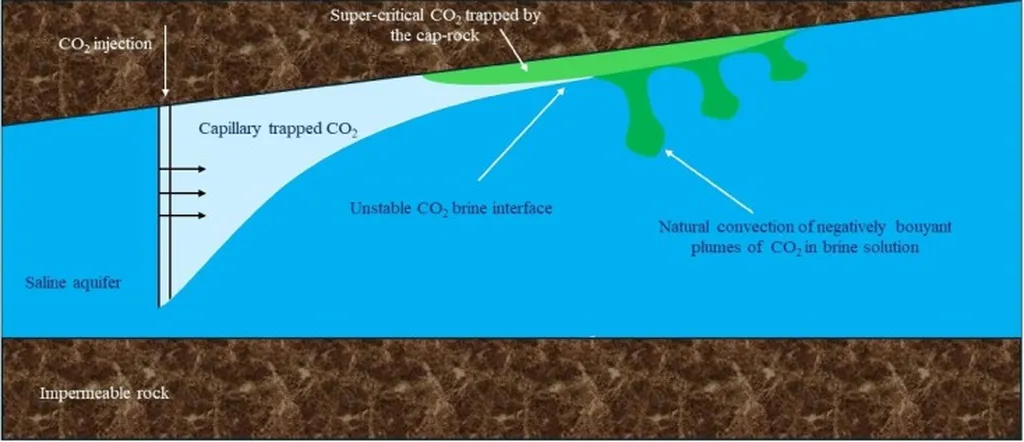In the quest to mitigate climate change, carbon capture and storage (CCS) technologies have emerged as a critical tool, and a recent study published in the journal “Frontiers of Earth Science” sheds new light on optimizing these processes. The research, led by Wentao Zhao from the China Huaneng Clean Energy Research Institute in Beijing, focuses on the factors influencing the carbon sequestration coefficient in saline aquifers, a key component in evaluating the potential of geological CO2 storage.
The study addresses a significant gap in the current methods used to calculate CO2 storage potential. While the volumetric method is widely employed, its accuracy hinges on the pore volume of reservoir rocks and the effective storage coefficient. Although advancements in geological exploration can enhance the precision of reservoir rock pore volume, the selection of effective storage coefficients often lacks a theoretical foundation. This is where Zhao’s research comes into play.
To investigate the influencing factors of the effective carbon sequestration coefficient, Zhao and his team conducted nine sets of multiphase flow core displacement experiments using an orthogonal design. The variables in these experiments included porosity, confining pressure, and pressure difference. The results revealed that porosity has the most substantial impact on maximum residual CO2 saturation, a crucial factor in determining storage potential.
The study also employed nuclear magnetic resonance (NMR) T2 curves to perform a qualitative analysis of water migration in cores during displacement. This analysis uncovered a close correlation between water movement and pore structure: water in mesopores and macropores is preferentially displaced, while water in nanopores and micropores is more resistant to displacement. Furthermore, NMR was used to analyze the maximum residual CO2 saturation of artificial cores under different conditions, leading to the establishment of a multiple linear regression equation for maximum residual CO2 saturation.
One of the most significant implications of this research is the potential to improve the accuracy of CO2 geological storage potential evaluations. By incorporating the volume coefficient derived from numerical simulations, the geological CO2 storage coefficient for actual engineering sites can be estimated more precisely. This advancement could have substantial commercial impacts for the energy sector, as it enables more informed decision-making and optimized resource allocation in CCS projects.
“The findings of this study provide a more robust theoretical foundation for selecting effective storage coefficients, which is crucial for enhancing the precision of CO2 geological storage potential evaluations,” said Zhao. “This, in turn, can facilitate the development of more efficient and cost-effective CCS technologies, contributing to the global effort to mitigate climate change.”
As the energy sector continues to explore and implement CCS technologies, research like Zhao’s plays a pivotal role in shaping future developments. By improving our understanding of the factors influencing carbon sequestration coefficients, we can optimize storage potential and pave the way for more sustainable energy practices. The insights gained from this study not only advance the scientific community’s knowledge but also offer practical solutions for industry professionals seeking to maximize the effectiveness of their CCS initiatives.

